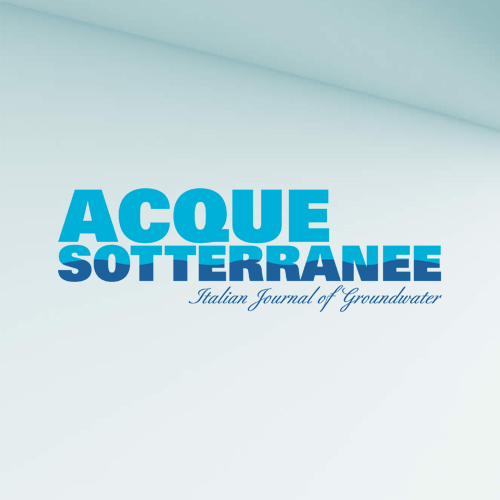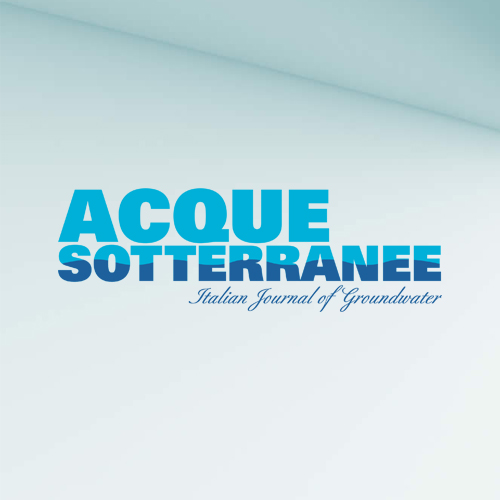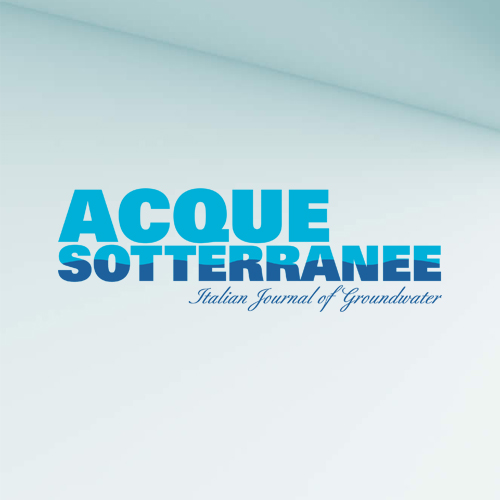Spatio-temporal variability of groundwater hydrochemical features in different hydrogeological settings in Piedmont and Campania regions (Italy), a comparative study
Accepted: 19 March 2024
SUPPLEMENTARY MATERIALS: 106
All claims expressed in this article are solely those of the authors and do not necessarily represent those of their affiliated organizations, or those of the publisher, the editors and the reviewers. Any product that may be evaluated in this article or claim that may be made by its manufacturer is not guaranteed or endorsed by the publisher.
Authors
The spatio-temporal evolution of groundwater chemistry has seen an increase in interest over the last decade at a global level. Identifying and discerning the sources of the natural and anthropogenic compounds and the actual hydrochemical processes, as well as their evolution, is essential to support a sustainable planning for managing and protecting groundwater resources at the present time and in the future. The main objective of this study is the comparison of two study areas in Italy (Piedmont and Campania Regions), different in their geographical and geological contexts and climate conditions, to highlight the similarities and differences in the hydrogeochemical behavior in space and time. Three main ions were considered (NO3 –, SO4 2–, Na+) and analyzed to identify the sources and hydrochemical processes responsible for their spatial distribution in the 2015-2020 period and evaluate the existence and the potential causes of trends in their concentration for the 2000-2020 period. Results highlight specific factors and processes distinguishing the spatial distribution and temporal variability of ion concentrations in Piedmont and Campania study areas. These processes are mainly related to the geological and geographical features of the study areas. In both areas, a significant influence of anthropogenic pressures emerges for both spatial and temporal evolutions, with remarkably increasing trends in NO3 – concentrations. In conclusion, some factors and processes emerge as site-specific, mainly related to the geological aspects and natural hydrochemical processes, whereas others are in common (i.e., anthropogenic impacts); thus, reinforcing the advantage of making comparative studies.
How to Cite

This work is licensed under a Creative Commons Attribution-NonCommercial 4.0 International License.
PAGEPress has chosen to apply the Creative Commons Attribution NonCommercial 4.0 International License (CC BY-NC 4.0) to all manuscripts to be published.
Similar Articles
- Lidia Razowska-Jaworek, Groundwater in Katowice - center of a large urban and deep coal mining area in Poland , Acque Sotterranee - Italian Journal of Groundwater: Vol. 13 No. 3 (2024)
- Mauro Roma, Isidoro Bonfà, Maria Pia Congi, Rossella Maria Gafà, Lucio Martarelli, Gennaro Maria Monti, Claudio Papiccio, Angelantonio Silvi, Valerio Vitale, Francesco La Vigna, Guardians of the aquifers: enhancing Rome’s groundwater monitoring network , Acque Sotterranee - Italian Journal of Groundwater: Vol. 13 No. 3 (2024)
- Alessio Fileccia, Groundwater potential in Sierra Leone , Acque Sotterranee - Italian Journal of Groundwater: Vol. 7 No. 2 (2018)
- Massimo V. Civita, Katia Rostagno, Dynamic resources of the Sanità spring at Caposele (South Italy) , Acque Sotterranee - Italian Journal of Groundwater: Vol. 3 No. 1 (2014)
- Alessandro Gargini, Alessandro Stefani, Stefano Vannini, The groundwater flow system of Terme Alte (Alto Reno Terme, Bologna, Italy) , Acque Sotterranee - Italian Journal of Groundwater: Vol. 9 No. 2 (2020)
- Maria Laura Foddis, Gabriele Uras, Philippe Ackerer, Augusto Montisci, Polluted aquifer inverse problem solution using artificial neural networks , Acque Sotterranee - Italian Journal of Groundwater: Vol. 11 No. 4 (2022)
- Giovanni Pranzini, Francesco Di Martino, Riccardo Fanti, Katia Fontanelli, Map of the vulnerabiliy to pollution of the Apuo-Versilia aquifer (Tuscany - Italy) , Acque Sotterranee - Italian Journal of Groundwater: Vol. 8 No. 2 (2019)
- Lucia Mastrorillo, Roberto Mazza, Stefano Viaroli, Recharge process of a dune aquifer (Roman coast, Italy) , Acque Sotterranee - Italian Journal of Groundwater: Vol. 7 No. 4 (2018)
- F. La Vigna, L. Alberti, S. Da Pelo, D. Ducci, P. Fabbri, A. Gargini, M. Lasagna, G. Pappalardo, M. Polemio, S. Rusi, Exploring the aquifers shaping Italy's sub-urban landscape , Acque Sotterranee - Italian Journal of Groundwater: Vol. 13 No. 3 (2024)
- Diego Di Curzio, Alessia Di Giovanni, Raffaele Lidori, Frank Silvio Marzano, Sergio Rusi, Investigating the feasibility of using precipitation measurements from weather RaDAR to estimate potential recharge in regional aquifers: the Majella massif case study in Central Italy , Acque Sotterranee - Italian Journal of Groundwater: Vol. 11 No. 3 (2022)
<< < 14 15 16 17 18 19 20 21 22 23 > >>
You may also start an advanced similarity search for this article.


 https://doi.org/10.7343/as-2024-748
https://doi.org/10.7343/as-2024-748










